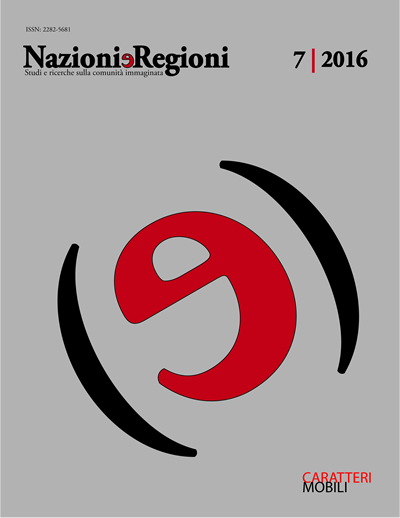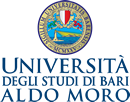Nazionalizzare Kazan’: Architettura e nazionalismo tataro nella capitale del Tatarstan (1991-2010)
DOI:
https://doi.org/10.15162/2282-5681/1500Parole chiave:
semiotica urbana, semiotica dell’architettura, nazionalismo tataro, Russia, Kazan’, Tatarstan., urban semiotics, semiotics of architecture, Tatar nationalism, TatarstanAbstract
Alla fine degli anni Ottanta in Tatarstan si diffuse e divenne egemonico un discorso politico nazionalista incentrato sulla necessità della riaffermazione culturale della ‘nazione tatara’ e sulla rivendicazione di una maggiore autonomia e sovranità. L’articolo mostra come la leadership repubblicana abbia cercato con successo di appropriarsene selettivamente, onde da un lato dare legittimità alla richiesta di una maggiore autonomia da Mosca, alle nuove istituzioni e al proprio sistema di potere, dall’altro estromettere i nazionalisti più radicali. L’articolo si focalizza in particolare sul ruolo cruciale svolto in questi sviluppi dal rimodellamento del paesaggio urbano e architettonico di Kazan’, e su come la sua conseguente, parziale ‘tatarizzazione’ sia stata il risultato di un compromesso tra le istanze nazionaliste tatare e la necessità di evitare lo scontro con Mosca e con la popolazione ‘etnicamente russa’ della repubblica.
In the end of the 1980s Tatarstan saw the spreading and later the hegemony of a nationalist political discourse centred on the need for a cultural reassertion of the ‘Tatar nation’ and on the claim for more autonomy and sovereignty. The article shows how the republican leadership was successfully in selectively appropriating this discourse in order to give legitimacy to its claim for more autonomy from Moscow and to its new institutions and power system, but also to neutralize radical nationalists. The article focuses in particular on the crucial role played in this context by the reshaping of Kazan’s urban and architectural landscape and on how its subsequent, partial ‘Tatarization’ was the result of a compromise between Tatar nationalist claims and the necessity to avoid a direct confrontation with Moscow and with the republic’s ‘ethnic Russians’.
Riferimenti bibliografici
AA. VV. (2005), Kazan’-Kazan 1005-2005, Morskoj Peterburg, Sankt-Peterburg.
Amirkhanov R. (1998), «The Tatar National Ideology: History and Modernity», Anthropology & Archeology of Eurasia, vol. 37, n. 2, Fall, pp. 32-47.
Anderson B. (2009), Comunità immaginate. Origini e fortuna dei nazionalismi, trad. it. di M. Vignale, Manifestolibri, Roma [1983].
Barthes R. (1979), Miti d’oggi, trad. it. di L. Lonzi, Einaudi, Torino [1957].
Barthes R. (1985), «Sémiologie et urbanisme», L’aventure sémiologique, Seuil, Paris [1970-1971].
Beissinger M. R. (2002), Nationalist Mobilization and the Collapse of the Soviet State, Cambridge University Press, Cambridge.
Bennigsen Broxup M. (1996), «Tatarstan and the Tatars», in Smith G. (ed.), The Nationalities Question in the Post-Soviet States, Longman, New York-London, pp. 75-93.
Chalit N. (2012) «Sovremennaja tatarskaja mečet’. Tradicija i stil’», in Nasledie Islama v muzejach Rossii: prostranstvennye granicy i obrazy. Materialy naučno-praktičeskoj konferencii 10-11 dekabrja 2008 g., Kazan’, Škola, <http://nhalitov.ru/content/sovremennaya-tatarskaya-mechet-tradiciya-i-stil >.
Davis H. – Hammond Ph. – Nizamova L. (2000), «Media, Language Policy and Cultural Change in Tatarstan: Historic vs. Pragmatic Claims to Nationhood», Nations and Nationalism, vol. 6, n. 2, pp. 203-226.
Faller H. M. (2002), «Repossessing Kazan as a Form of Nation-Building in Tatarstan, Russia», Journal of Muslim Minority Affairs, vol. 22, n. 1, pp. 81-90.
Foucault M. (1972), L’ordine del discorso. I meccanismi sociali di controllo e di esclusione della parola, trad. it., Einaudi, Torino [1970].
Giuliano E. (2011), Constructing Grievance: Ethnic Nationalism in Russia’s Republics, Cornell University Press, Ithaca NY-London.
Gramsci A. (2013), Quaderni del carcere, a cura di V. Gerratana, ed. elettronica dell’Istituto Gramsci-International Gramsci Society, s.l.
Graney K. (2001), «Ten Years of Sovereignty in Tatarstan: End of the Beginning or Beginning of the End?», Problems of Post-Communism, vol. 48, n. 5, September/October, pp. 32-41.
Graney K. (2007), «Making Russia Multicultural: Kazan at Its Millennium and Beyond», Problems of Post-Communism, vol. 54, n. 6, November/December, pp. 17-27.
Hillenbrand R. (2000), Islamic Architecture: Form, Function and Meaning, Edinburgh University Press, Edinburgh [1994].
Hobsbawm E. J. (1994), «Introduzione: come si inventa una tradizione», in Hobsbawm , E. J. – Ranger T. (a cura di), L’invenzione della tradizione, trad. it. di E. Basaglia, Einaudi, Torino, pp. 3-17 [1983].
Hughes C. F. (2007), «The Influence of Ethnicity and Nationalism on Soviet and Post-Soviet Urbanization in Tallinn, Estonia and Kazan, Russia», Geography Honors Projects, Paper 12.
Hunter Sh. T. – Thomas J. L. – Melikishvili A. (2004), Islam in Russia. The Politics of Identity and Security, M. E. Sharpe, Armonk NY.
Khakimov R. (2004), «Euro Islam in the Volga Region», Journal of South Asian and Middle Eastern Studies, vol. XXVII, n. 2, Winter, pp. 1-13.
Khakimov R. (2004-05), «The Tatars», Anthropology & Archeology of Eurasia, vol. 43, n. 3, Winter, pp. 45-61.
Khalid A. (1999), The Politics of Muslim Cultural Reform: Jadidism in Central Asia, University of California Press, Berkeley-Los Angeles-Oxford.
Khalid A. (2004), «Postsovetskie sud’by sredneaziatskogo islama», Ab Imperio, n. 3, pp. 439-466.
Khalid A. (2013), «Un Islam laico: nazione, stato e religione in Uzbekistan», Nazioni e regioni. Studi e ricerche sulla comunità immaginata, n. 2, pp. 111-142.
Kinossian N. (2012), «Post-Socialist Transition and Remaking the City: Political Construction of Heritage in Tatarstan», Europe-Asia Studies, vol. 64, n. 5, pp. 879-901.
Lotman Ju. M. (2010), «Architektura v kontekste kul’tury», in Semiosfera, Iskusstvo-SPB, Sankt-Peterburg, pp. 676-683 [1985].
Malašenko A. (2009), «Islam ‘legalizovannyj’ i vozroždennyj», in Malašenko A. – Filatov S. (eds.), Dvadcat’ let religioznoj svobody v Rossii, Rosspen, Moskva, pp. 240-261.
Martin T. (2002), «An Affirmative Action Empire: The Soviet Union as the Highest Form of Imperialism», in Suny R. G. – Martin T. (eds.), A State of Nations: Empire and Nation-Making in the Age of Lenin and Stalin, Oxford University Press, Oxford-New York: pp. 67-90.
Osborne B. (2008), “Constructions of National Symbolic Spaces and Places: The State of Place in Identity”, in Herb G. H. – Kaplan D. H. (eds.), Nations and Nationalism. A Global Historical Overview, vol. 4, Abc-Clio, Santa Barbara CA-Denver-Oxford, pp. 1342-1349.
Ponarin E. (2008), «Changing Federalism and the Islamic Challenge in Tatarstan», Demokratizatsiya, n. 163, pp. 265-276.
Said E. W. (1991), Orientalismo, trad. it. di S. Galli, Bollati Boringhieri, Torino [1978].
Tishkov V. (1997), Ethnicity, Nationalism and Conflict in and after the Soviet Union: The Mind Aflame, SAGE, London.
Volli U. (2005), «Per una semiotica della città», in Laboratorio di semiotica, Laterza, Roma-Bari, pp. 5-36.
Downloads
Pubblicato
Fascicolo
Sezione
Licenza
Nazioni e regioni è una rivista open access che applica la licenza Creative Commons CC BY-NC-ND 4.0 a tutti i contenuti pubblicati.
Nazioni e regioni is an open-access journal that applies the Creative Commons CC BY-NC-ND 4.0 licence to all published contents.







